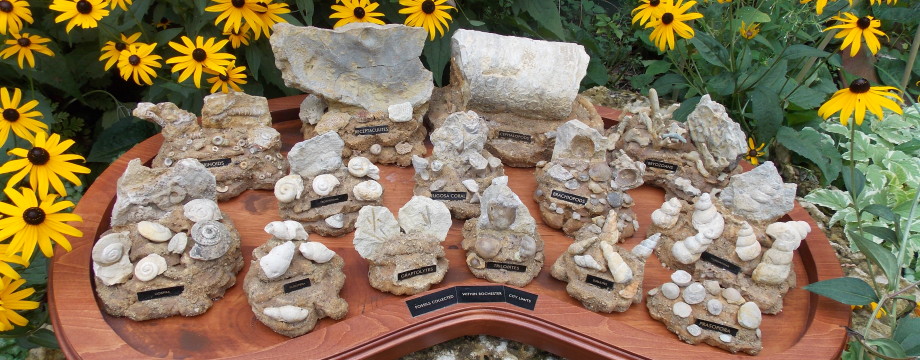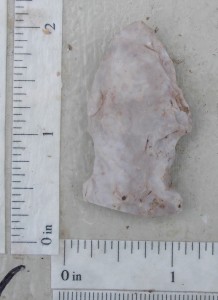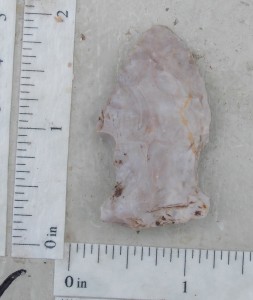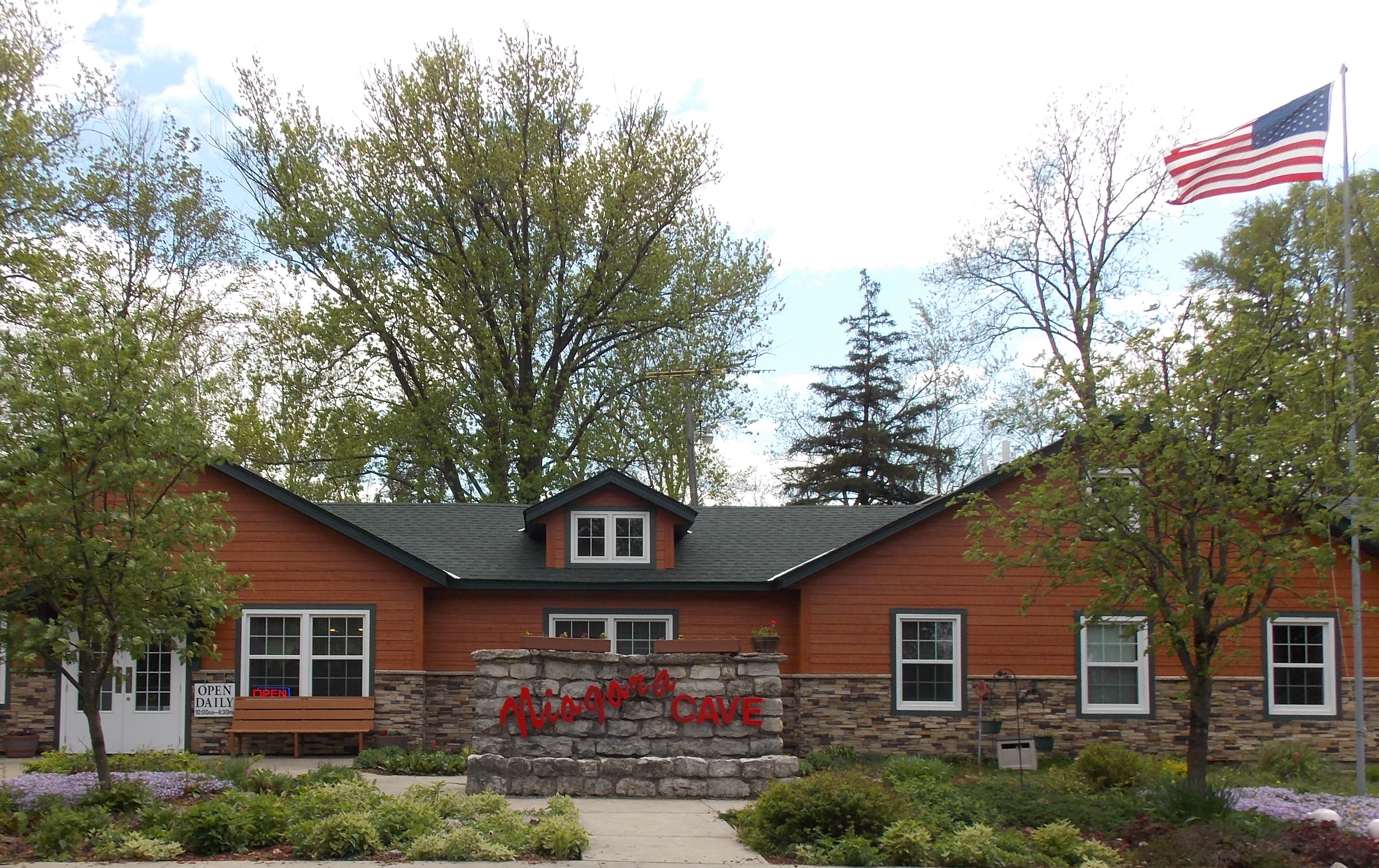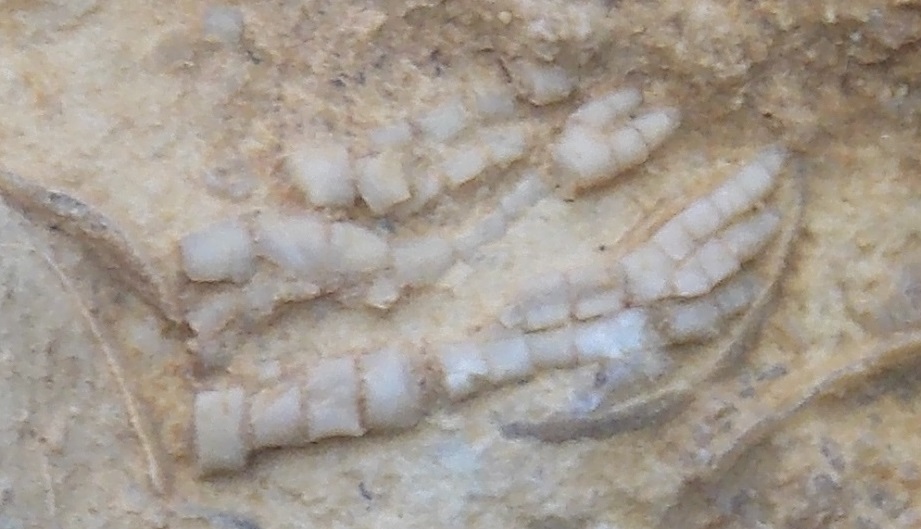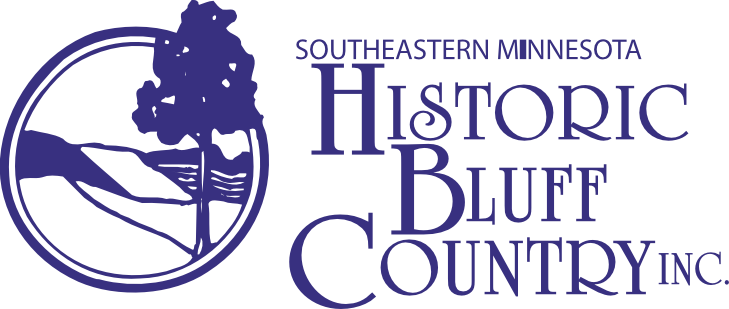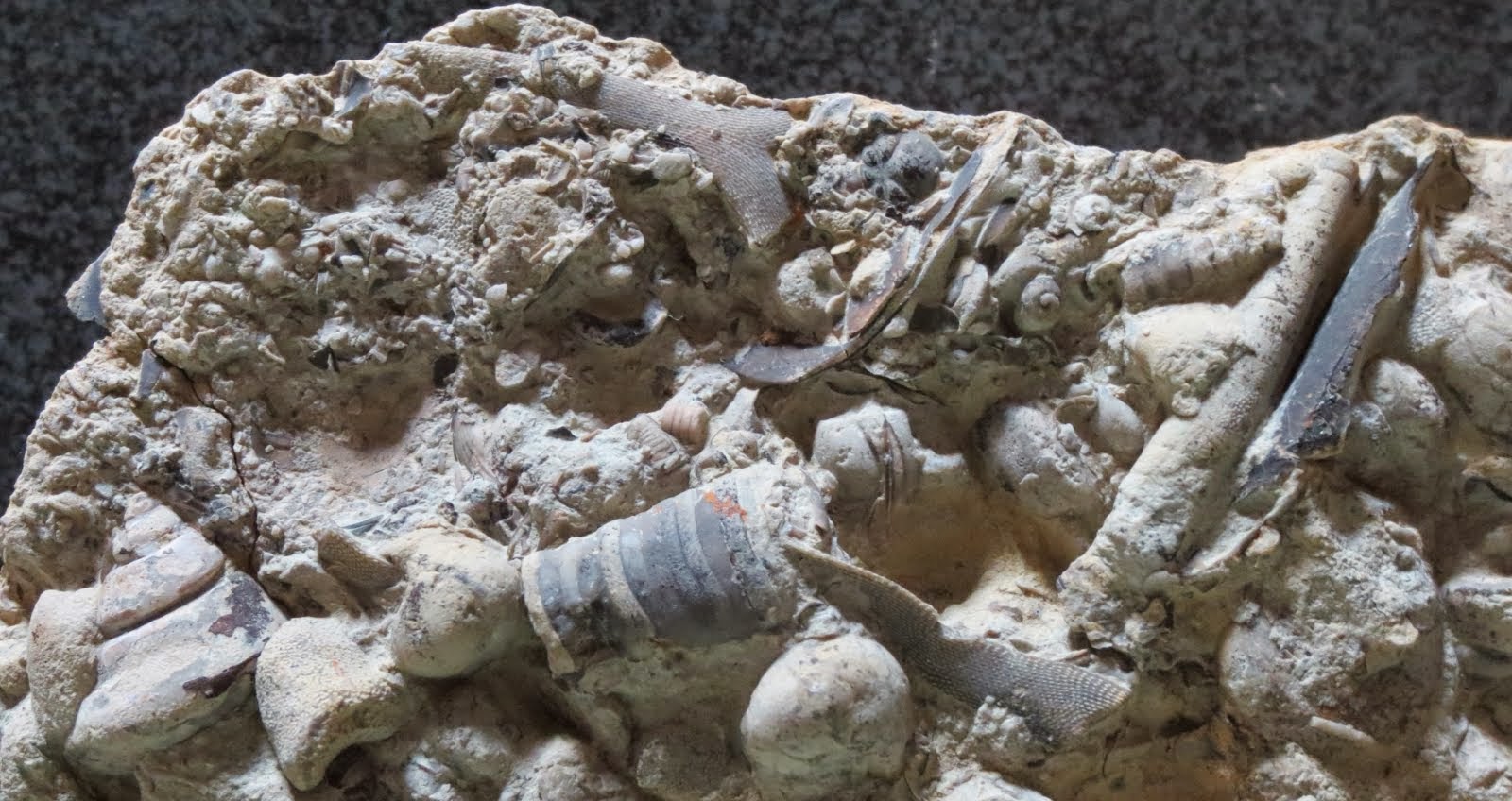I was again lost on some road between Fillmore and Olmsted counties trying to find my way back home and saw this interesting road cut. A five minute stop, yes it was fossiliferous, and then the sun glinted on something. I love anything that sparkles so I dug it out of the mud – we have been having way too much rain lately.
I wasn’t sure it was an arrowhead or not because I have found a lot of rocks that sorta kinda look like arrowheads or have been so water worn they could have been arrowheads. This looked to be chert though and although not perfectly symmetrical it seemed to have the telltale chipping of an intentional work, so I put it on TFF for ID.
Identified on thefossilforum.com Artifacts and Relics forum as a Native American spear point, Archaic Period.
So, what does that mean? I went in search on the internet and found this about Minnesota History:
“http://www.osa.admin.state.mn.us/mnarch/mnoverview.html
An Overview of Minnesota Archaeology
The cultural sequence in the region begins with PALEOINDIAN (ca. 10,000 to 6000 BC). As glaciers receded from the Upper Midwest, migratory groups of people settled throughout the area’s open woodlands and succeeding grasslands, hunting native herding animals such as bison and mastodon, and likely exploiting available small-game, fish and plant resources as well. Throughout much of this period, the climate was becoming successively warmer and drier. In addition to distinctive, lanceolate projectile points (Clovis, Folsom and Plano types), the tool kits included large, bifacially flaked knives, simple choppers and large scrapers. The settlement pattern for these peoples is poorly understood.
Characteristic of the ARCHAIC period (ca. 6000 to 800 BC) was a continued reliance on large game hunting and increasingly diversified technologies associated with hunting, trapping, fishing, foraging, woodworking and plant processing. This diversification of culture and associated technologies reflects more highly regionalized adaptation to local environmental conditions as climatic trends shifted to a cooler, wetter configuration, a pattern which continues to this day. Chipped stone tools such as stemmed and notched projectile points dominate the tool kit, but the use of pecked and ground stone implements also became widespread, and use of copper implements is apparent late in the period. Evidence of the exploitation of diverse floral and faunal resources suggests a seasonal round type subsistence-settlement system, with habitation areas often located along the margins of lakes and major rivers.
The WOODLAND period (ca. 800 BC to historic contact) in the region appears to have been associated with incipient plant domestication, but intensive gathering provided the bulk of subsistence needs. Settlement patterns resembled those appearing previously, with particularly intense occupation of stream/lake junctions late in the period. An especially significant technological innovation of the Woodland peoples is the development of ceramics. Earthwork (mound) construction frequently associated with mortuary activity also developed at this time.
Evidence of ONEOTA / PLAINS VILLAGE occupation (ca. 900 AD to historic contact) is reported for areas of southern Minnesota, with the largest identified sites located along the margins of major river valleys or other water bodies. These peoples appear to have developed a blended subsistence strategy based on simple agriculture, gathering and bison hunting.
Early in the HISTORIC period (ca. 1630 to present), western portions of the State were occupied by Yankton Dakota, while Santee Dakota occupied the east. Ojibwa peoples had largely displaced Dakota in the northeast by the mid-1700s. French fur traders had moved into the region by the late 1600s, to be succeeded, in turn, by English and American traders. EuroAmerican settlement of the area accelerated in the early 1800s with the establishment of Fort Snelling at the confluence of the Minnesota and Mississippi Rivers. Urban commercial centers formed around the water-powered mills of St. Anthony Falls and the northernmost navigable areas of the Mississippi. The region saw the development of agricultural communities in the south and west, and lumbering centers in the east and north during the mid- to late 1800s.”

